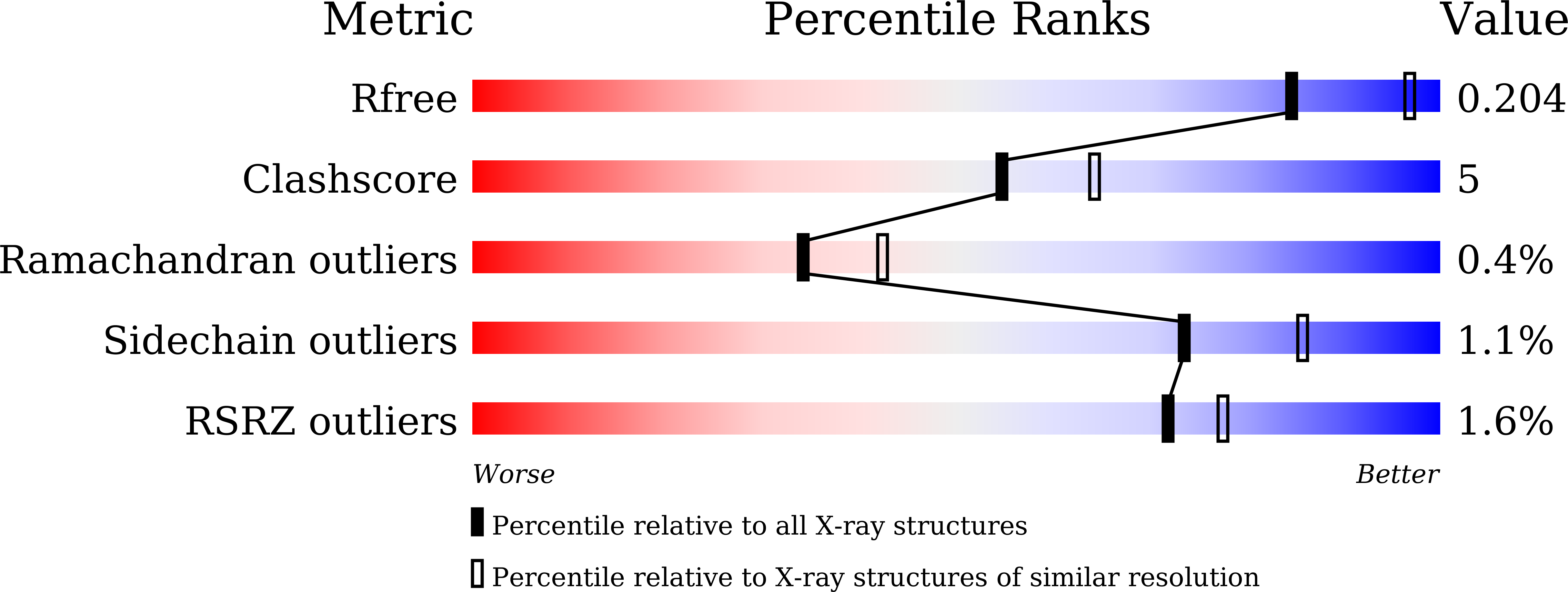Structure-Guided Design of Formate Dehydrogenase for Regeneration of a Non-Natural Redox Cofactor.
Guo, X., Wang, X., Liu, Y., Li, Q., Wang, J., Liu, W., Zhao, Z.K.(2020) Chemistry 26: 16611-16615
- PubMed: 32815230
- DOI: https://doi.org/10.1002/chem.202003102
- Primary Citation of Related Structures:
6JUJ, 6JUK, 6JWG, 6JX1 - PubMed Abstract:
Formate dehydrogenase (FDH) has been widely used for the regeneration of the reduced nicotinamide adenine dinucleotide (NADH). To utilize nicotinamide cytosine dinucleotide (NCD) as a non-natural redox cofactor, it remains challenging as NCDH, the reduced form of NCD, has to be efficiently regenerated. Here we demonstrate successful engineering of FDH for NCDH regeneration. Guided by the structural information of FDH from Pseudomonas sp. 101 (pseFDH) and the NAD-pseFDH complex, semi-rational strategies were applied to design mutant libraries and screen for NCD-linked activity. The most active mutant reached a cofactor preference switch from NAD to NCD by 3700-fold. Homology modeling analysis showed that these mutants had reduced cofactor binding pockets and dedicated hydrophobic interactions for NCD. Efficient regeneration of NCDH was implemented by powering an NCD-dependent D-lactate dehydrogenase for stoichiometric and stereospecific reduction of pyruvate to D-lactate at the expense of formate.
Organizational Affiliation:
Laboratory of Biotechnology, Dalian Institute of Chemical Physics, Chinese Academy of Sciences, Dalian, 116023, P. R. China.


















